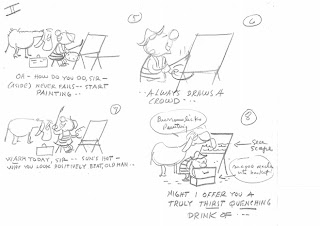In
readying the 50th anniversary edition of the book, I did a little more research into the
facilities where Mr. Magoo's Christmas Carol was recorded-the dialogue, the
songs and the score. In the first
edition, I had chased all that information down, even to looking for the vaults
where the recorded material might have been stored. This time I was more interested in the
recording facilities themselves and briefly considered adding images of the studios to the book while providing
a little more history on the places.
Unfortunately, inserting this material proved disruptive to the narrative flow of
the book so I decided to post it on the blog.
 |
| Altec Lansing crew, ca. 1944 |
 |
| Photo from 2009, facade has since been covered by vegetation. |
Although UPA had a recording studio, as
with many of the pre-production aspects of Mr. Magoo's Christmas Carol, Orgel went for the best,
booking his dialogue sessions at Ryder Sound Services. The late Laura Olsher recalled that between the day's sessions, the actors went
upstairs for lunch at a place called The Grapevine. I have not been able to find corroborating
information regarding the restaurant but I have no reason to doubt her
memory. A real estate listing from a few
years ago shows a loft, which would have been the eatery in its heyday.
At
the time of the recording sessions, the building still retained its old LA
charm. Since then, it has seen a a variety of uses, and has lost some of its original appeal, being painted a deep red with vegetation allowed to
obscure its façade. It’s currently home to
Stereo D, a provider of 3D conversion services to the motion picture industry.













